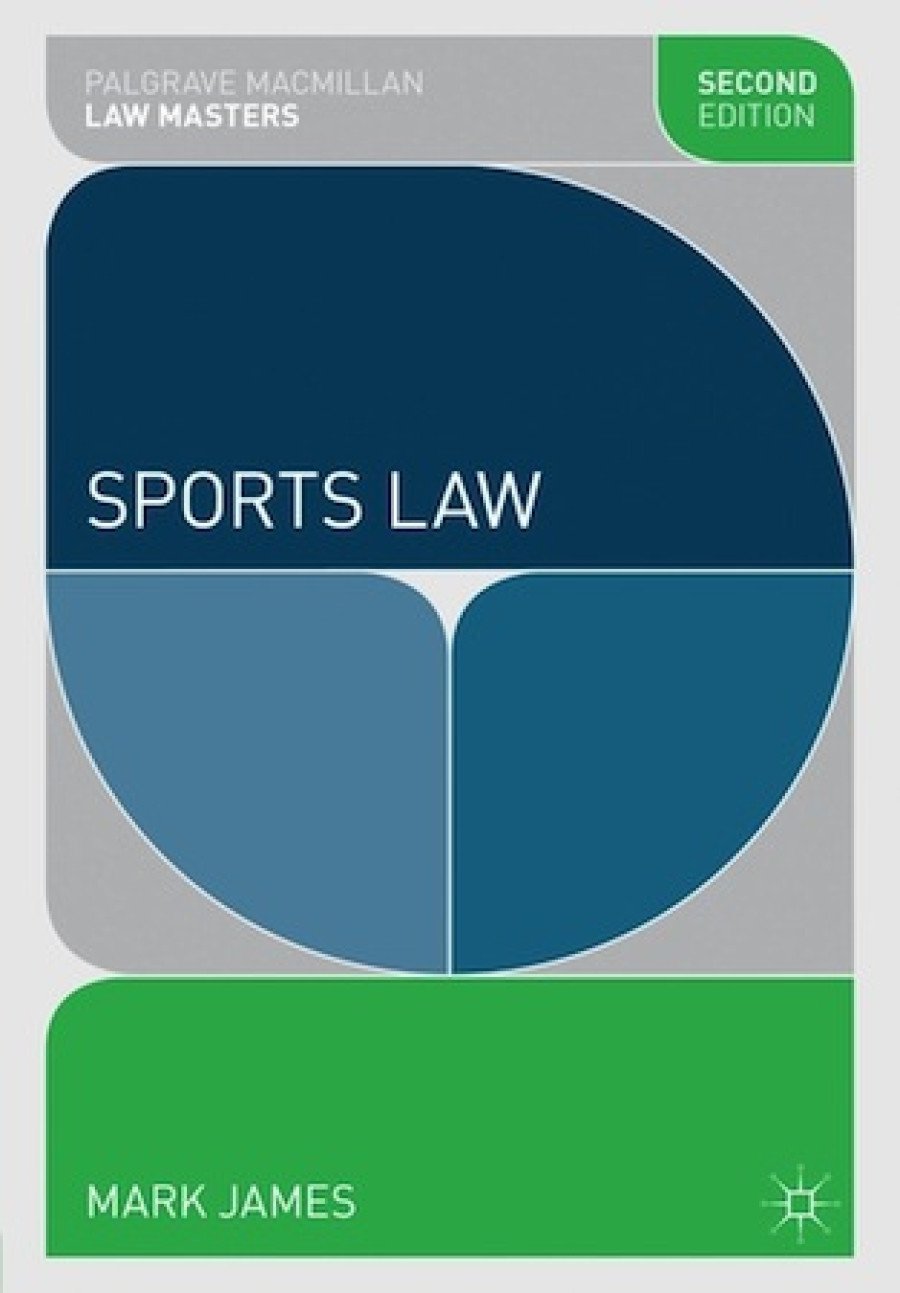Sports Law by Prof Mark James – “the perfect sports law text…”
The second edition of Sports Law by Professor Mark James provides is the perfect sports law text for both sports law students and practitioners. It is written in such a way that reflects the author’s character and his fields of research and expertise whilst remaining broad enough in its scope to cover all the key areas in the field.
The author’s style is extremely user friendly: at the beginning of each chapter there is a mind map of what is contained in the chapter to come, the key terms are also explained at the beginning, the chapter itself is interspersed with clear summaries of the salient points of key cases, as well as important pieces of legislation and then to end each chapter is a hot topic and a summary, as well as a pointer in the direction of further reading. Unlike traditional textbooks and practitioner texts, which are often dominated by footnotes, Professor James’ approach is one which makes for an enjoyable narrative throughout.
Part 1 of the book covers the origins and sources of sports law. It is here where the author puts the key concepts in place and sets the scene for the remainder of the book set in three separate parts. The author’s explanation of the different areas of sports law is particularly engaging and clear and covers both European and international aspects of sports law, including the Court of Arbitration for Sport, however, being a book targeted primarily at the UK market it does focus to a large extent on challenging governing bodies in English law.
Given the author’s research and expertise regarding all manner of injuries in sport it is of little surprise that Part 2 of Sports Law (2nd Edition) looks at the liability for injuries caused in a variety of circumstances. In what can be an often complicated area of the law the clarity of writing and structure of the paragraphs is welcome. His case law examples draw from a variety of sports ranging from motor sports to horse racing and climbing. When it comes to liability for injuries either caused by other participants, non participants or the liability that faces event organisers and owners no stone is left unturned. Having a criminal law background the chapter regarding sports participation in the criminal law is particularly engaging with the end of the chapter covering the specific legal issues surrounding fighting sports, which is becoming ever more important with the growth of mixed martial arts.
It is only natural moving on from liability for injuries in sports participation that the author then moves on in Part 3 to discuss the areas of stadiums, spectators and the law. In this chapter the author is conscious of the fact that although there is state legislation in place in the UK to govern the area of hosting of events, and the liability or doing so, there are comparisons drawn to international cases and legislation. Given recent developments regarding the Hillsborough disaster there is an engaging and comprehensive chapter discussing stadium disasters and spectator safety which would not be found to such a detailed degree in the majority of sports law texts. Given another one of the author’s research areas is football spectators again there is a great insight into the legal issues surrounding crowd disorder and football hooliganism. Indeed I have been fortunate enough to be part of a podcast discussing the more recent issues regarding football banning orders and I must admit that I too used this book and this chapter in preparation of discussing the issue with the author himself.
The fourth and final part of the book is one of particular interest to practitioners of sports law as it examines issues surrounding the commercialisation of sport, which is of course of paramount importance to a number of stakeholders in sports. The chapter regarding the regulation of sporting relationships in English law is rooted in a variety of contractual disputes that arise. It is also good to see the author discussing in some depth the issues of discrimination and equality in sport. The author then goes on to the EU Laws which apply to sport, most of which go to the heart of transfers and broadcasting. The author ends the final part of the book with two chapters looking at specific commercial areas of sports law, one being the exploitation of commercial rights and the other being the recent 2012 Olympic Games in London. The latter of these is particularly important given the wide ranging implications some of the legislation surrounding (what the author terms) “super” IP rights and the various methods of attempting to prevent ambush marketing will have on future sporting mega events.
Sports Law (2nd Edition) by Professor Mark James is a perfect companion for either the academic or practising sports lawyer. It strikes the perfect tone in not being heavy on legalese and yet is extremely user friendly which is to its credit.




